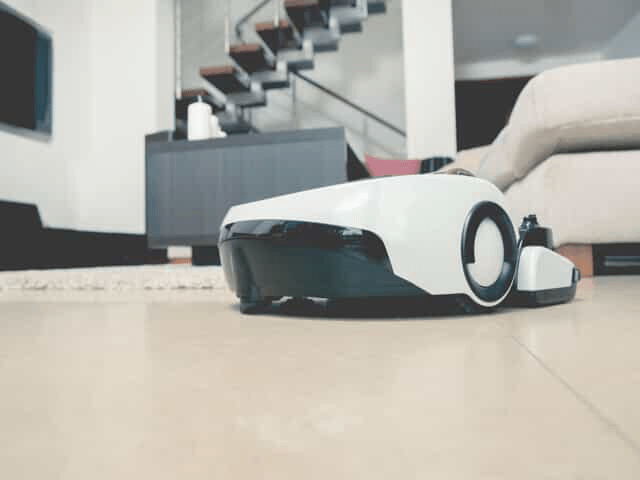Robotic vacuums have the impressive ability to avoid large objects, stairs, and walls without human intervention. But how do they do it? This week’s blog will discuss how these machines use sensors and Bluetooth capabilities to provide thorough cleaning without falling victim to the many household dangers they face. 
Most brands have their own proprietary navigation software, but each one uses multiple sensors to help pilot. Cameras in the devices differentiate between light and dark spaces rather than recognizing the furniture itself. Early versions of these products were less precise and had sensors that kept their paths straight when they operated against walls; this left them to otherwise travel randomly until hitting an obstacle. Later versions incorporated infrared sensors to alert the robot of upcoming obstacles such as stairs and drops. Sensors also detect whether the device is picking up dirt and debris. Additionally, bumpers were added to the updated models to detect collisions and reroute the device.
Today’s most advanced vacuums have the ability to learn the layout of your home on their own. With these new features, the robots create a real time map during their cleaning by recording information from sensors as well as cameras. By cataloging the distance and direction traveled, the device is able to more accurately navigate spaces. Distance is recorded through optical encoders that sense how many times the wheels have rotated. The cameras are used to analyze images for distinct features, such as multiple corners on couches. With both the cameras and sensors working to create a standard path, you can rest assured that your robot will run the most efficient route.
These machines are intelligent enough to take the fastest route to their chargers once their batteries are low and to remember where they left off once they’ve been charged. Some of today’s devices even come with paired apps. Apps are used to run diagnostics on these devices and to customize their schedule. Users can instruct the device to clean twice per day and designate places to empty their bin. Many customers enjoy these advanced functions.
With such constant growth within the robotic vacuuming industry, there will definitely be more features and attributes added to these machines. Our team looks forward to learning more about the capabilities of these machines and the differences in each model. Hopefully, these robotic vacuums will soon have commercial capabilities! Stay tuned to our blog for more information on robotic vacuuming, tips and tricks, and company achievements!

